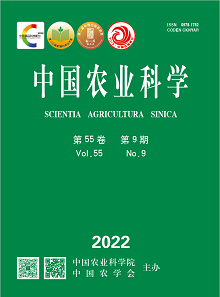【Objective】 In order to clarify the photosynthetic mechanism affecting the yield formation of spring maize under different nitrogen application levels, the effects of different nitrogen application levels on nitrogen use efficiency and soil nitrogen surplus were analyzed, so as to provide the theoretical reference for rational application of nitrogen fertilizer and promoting high yield and high efficiency of spring maize.【Method】Using the maize of variety Zhongyu 3 as experimental material, the field experiments were carried out in 2019 and 2020 at the long-term fertilizer effect experimental site of Ya’an Experimental Farm of Sichuan Agricultural University. Nitrogen supply included five levels, such as 0 (no nitrogen application), 90 (low nitrogen), 180 (appropriate amount of nitrogen), 270 (farmers’ habitual nitrogen application), and 360 kg·hm-2 (high nitrogen), which were marked as N0, N1, N2, N3, and N4, respectively. The leaf area was measured at jointing period, silking period and grain-filling period, and the leaf area index and leaf area duration were calculated, respectively. The photosynthetic parameters, such as net photosynthetic rate of ear leaves were measured at grain-filling period, and chlorophyll content was measured at silking period and grain-filling period. The dry matter accumulation of aboveground population was measured at silking period, grain-filling period, and harvest period, the yield was measured at harvest, the nitrogen content of each part was analyzed, and the soil nitrogen surplus, nitrogen use efficiency of spring maize and economic benefit of nitrogen application were calculated.【Result】(1) The spring maize yield increased first and then remained flat with the increase of nitrogen application levels. In 2019 and 2020, the yield under N2 treatment was the highest, with an average of 9 746 kg·hm-2, which was 179% and 28.7% higher than that of N0 and N1 treatments (P<0.05), respectively, but there was no significant difference among N2, N3, and N4 treatments. 2-year yield was fitted by linear + platform fitting, the platform nitrogen application level was 134.8 kg·hm-2, the platform yield was 9 604 kg·hm-2, and the output-input ratio of platform nitrogen fertilizer (134.8 kg·hm-2) was the highest (12.6). (2) Compared with no nitrogen application, the appropriate amount of nitrogen application (N2) significantly increased chlorophyll content, net photosynthetic rate, stomatal conductance, transpiration rate of ear leaves, leaf area index and leaf area duration. However, with the increase of nitrogen fertilizer application, there was no significant difference or even decreased significantly in the above indexes. (3) Combined with the correlation analysis and partial least square analysis of photosynthetic characteristics and harvest yield, the yield was significant positively correlated with leaf area duration, net photosynthetic rate, stomatal conductance, transpiration rate, leaf area index, chlorophyll a+b of spring maize (P<0.01), and the main factor affecting spring maize yield was chlorophyll a+b. (4) During the harvest period, the grain nitrogen accumulation and total aboveground nitrogen accumulation increased significantly with the increase of nitrogen application level, and increased slightly or basically flat after N2 treatment (more than 180 kg·hm-2) in the two years. The fitting results showed that the nitrogen application level was 139 kg·hm-2 when the soil nitrogen surplus was 0 kg·hm-2; The nitrogen apparent recovery efficiency of spring maize under N2 treatment was the highest in the two years, with an average of 73.7%, which was 10.8% higher than that under N1 treatment (P<0.05), the nitrogen apparent recovery efficiency decreased significantly with the continuous application of nitrogen fertilizer. Compared with N2 treatment, the nitrogen apparent recovery efficiency of N3 and N4 treatments decreased by 32.9% and 48.1%, respectively (P<0.05).【Conclusion】The proper amount of nitrogen application could obviously improve the photosynthetic performance of spring maize leaves, delay the degradation of total chlorophyll in ear leaves, prolong the duration of photosynthesis, and optimize the role among total chlorophyll, leaf area index and leaf area duration in the yield formation of spring maize. At the same time, the proper amount of nitrogen application could significantly increase the dry matter accumulation of aboveground population and grain yield, promote the absorption and accumulation of nitrogen to maize, reduce nitrogen residue in soil, and improve the nitrogen apparent recovery efficiency. Considering the factors such as yield, economic benefit of fertilization, apparent nitrogen use efficiency and nitrogen surplus, the nitrogen input of 139-180 kg·hm-2 could maintain the goal of high yield and high efficiency of spring maize in the experimental area (Ya’an, Sichuan).









